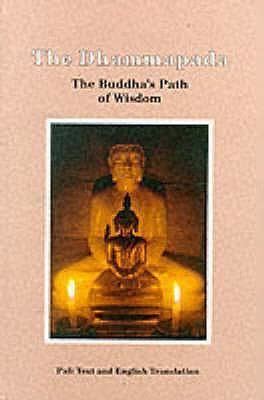 | ||
Similar Sutta Nipata, Pāli Canon, Sutta Pitaka, Samyutta Nikaya, Khuddaka Nikaya | ||
The dhammapada full audiobook buddhism teachings of the buddha
The Dhammapada (Pāli; Prakrit: धम्मपद Dhammapada;) is a collection of sayings of the Buddha in verse form and one of the most widely read and best known Buddhist scriptures. The original version of the Dhammapada is in the Khuddaka Nikaya, a division of the Pali Canon of Theravada Buddhism.
Contents
- The dhammapada full audiobook buddhism teachings of the buddha
- Title
- History
- Organization
- Excerpts
- Musical Settings
- References
The Buddhist scholar and commentator Buddhaghosa explains that each saying recorded in the collection was made on a different occasion in response to a unique situation that had arisen in the life of the Buddha and his monastic community. His commentary, the Dhammapada Atthakatha, presents the details of these events and is a rich source of legend for the life and times of the Buddha.
Title
The title, "Dhammapada," is a compound term composed of dhamma and pada, each word having a number of denotations and connotations. Generally, dhamma can refer to the Buddha's "doctrine" or an "eternal truth" or "righteousness" or all "phenomena"; and, at its root, pada means "foot" and thus by extension, especially in this context, means either "path" or "verse" (cf. "prosodic foot") or both. English translations of this text's title have used various combinations of these and related words.
History
According to tradition, the Dhammapada's verses were spoken by the Buddha on various occasions. "By distilling the complex models, theories, rhetorical style and sheer volume of the Buddha's teachings into concise, crystalline verses, the Dhammapada makes the Buddhist way of life available to anyone...In fact, it is possible that the very source of the Dhammapada in the third century B.C.E. is traceable to the need of the early Buddhist communities in India to laicize the ascetic impetus of the Buddha's original words." The text is part of the Khuddaka Nikaya of the Sutta Pitaka, although over half of the verses exist in other parts of the Pali Canon. A 4th or 5th century CE commentary attributed to Buddhaghosa includes 305 stories which give context to the verses.
Although the Pāli edition is the best-known, a number of other versions are known:
Comparing the Pali Dhammapada, the Gandhari Dharmapada and the Udanavarga, Brough (2001) identifies that the texts have in common 330 to 340 verses, 16 chapter headings and an underlying structure. He suggests that the three texts have a "common ancestor" but underlines that there is no evidence that any one of these three texts might have been the "primitive Dharmapada" from which the other two evolved.
The Dhammapada is considered one of the most popular pieces of Theravada literature. A critical edition of the Dhammapada was produced by Danish scholar Viggo Fausbøll in 1855, becoming the first Pali text to receive this kind of examination by the European academic community.
Organization
The Pali Dhammapada contains 423 verses in 26 chapters (listed below in English and, in parentheses, Pali).
Excerpts
The following English translations are from Müller (1881). The Pali text is from the Sri Lanka Tripitaka Project (SLTP) edition.
